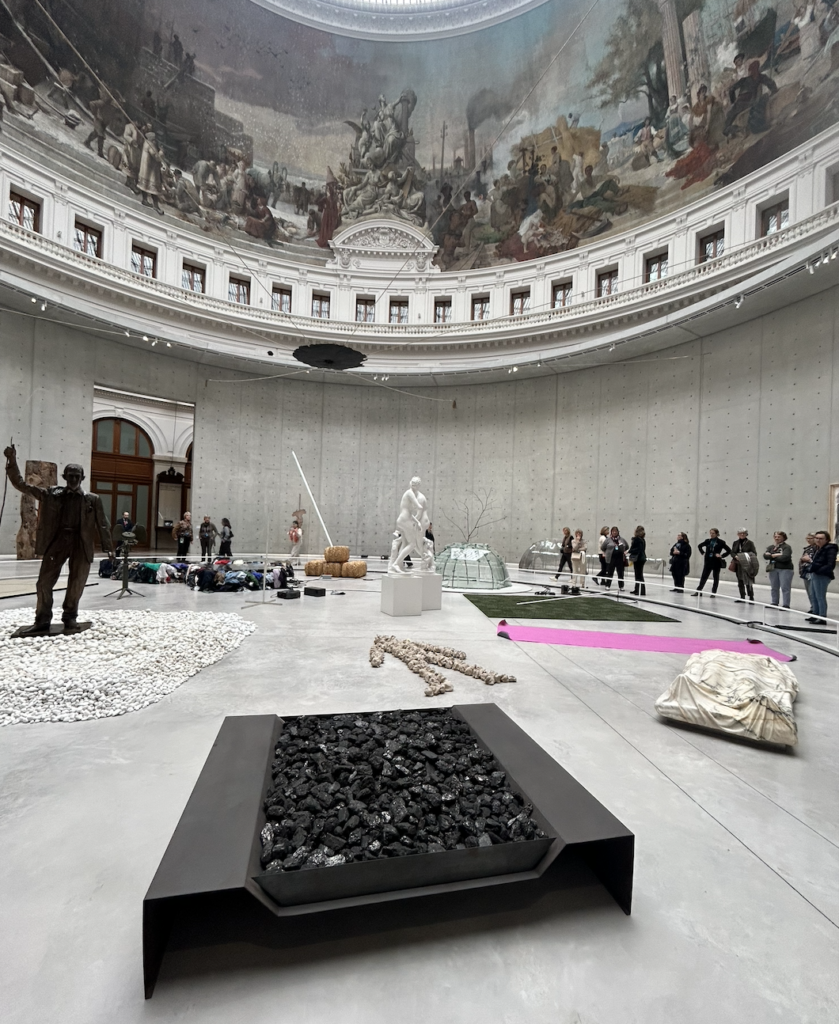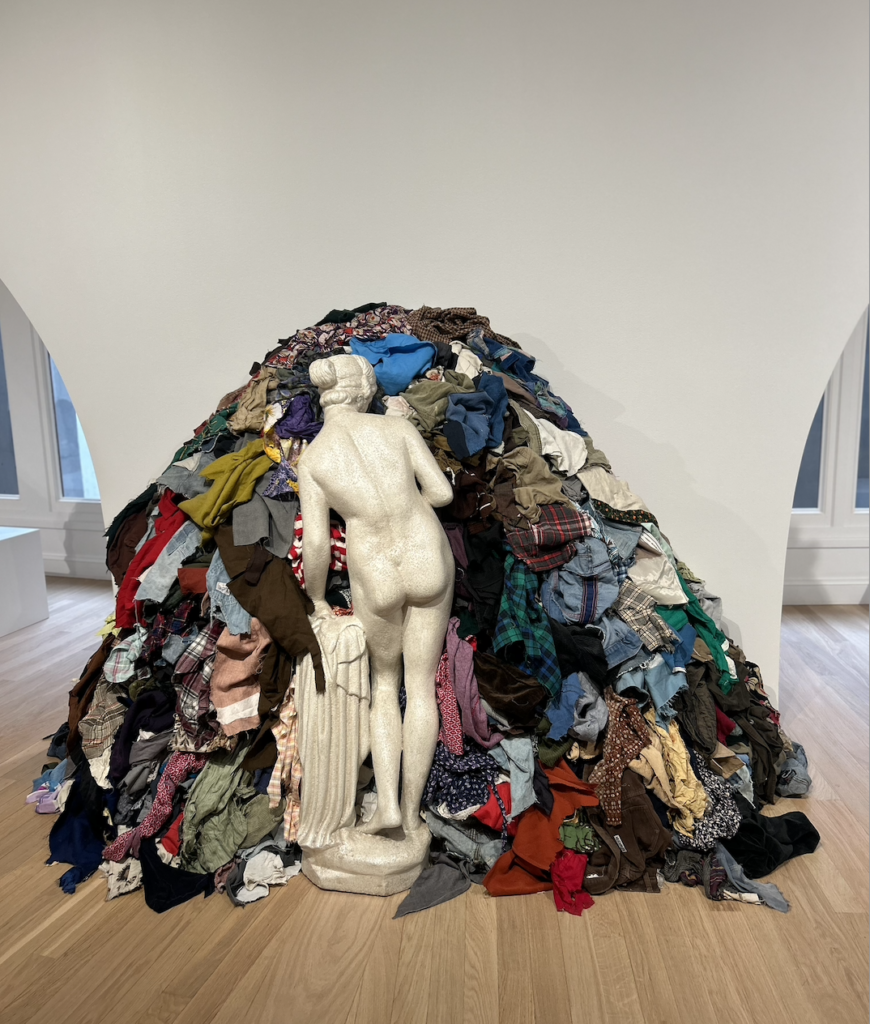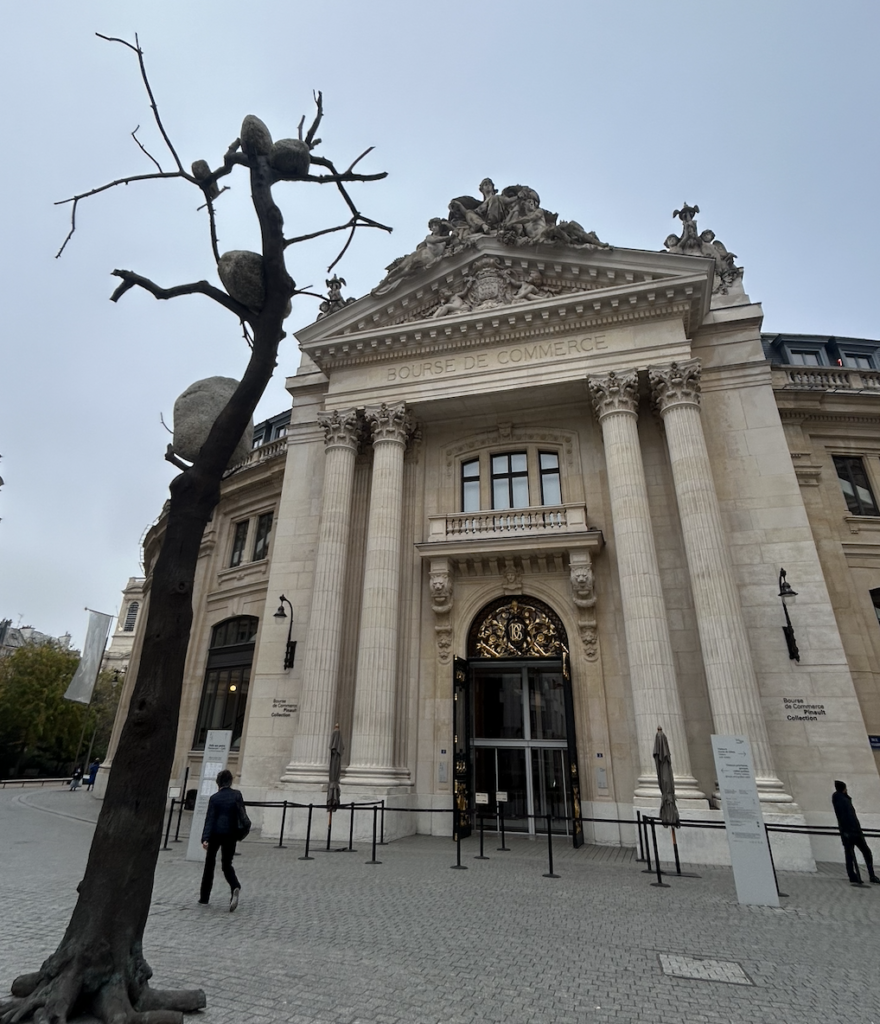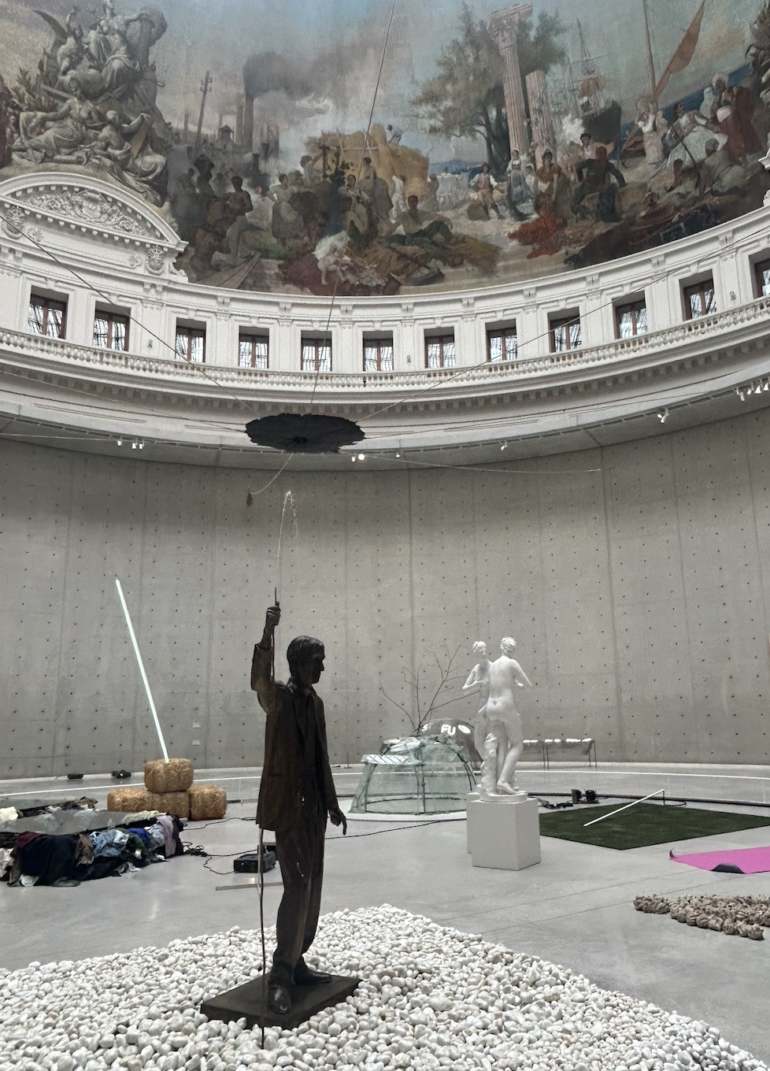Bourse de Commerce, Pinault Collection is hosting a major exhibition devoted to Arte Povera. Opened to the public in 2021, the Bourse de Commerce was restored and transformed by the Japanese architect Tadao Ando, the studio NeM / Niney et Marca Architectes, and the studio of Pierre-Antoine Gatier. François Pinault’s vast collection of art from the 1960s to the present day comprises 10,000 artworks and offers viewers a highly impassioned and personal perspective onto the art of our time.
As in Venice at the Palazzo Grassi and the Punta della Dogana, two historical buildings that were transformed to present his collection, François Pinault chose to preserve, to transform, and to enable the public to rediscover this emblematic Parisian monument. Between legacies and influences, the “Arte Povera” exhibition features more than 250 historic and contemporary works, as well as pieces that have taken their inspiration from this major Italian artistic movement of the 1960s.

“Arte Povera” at the Pinault Collection is a beautifully curated exhibition tracing the Italian birth of the movement through to its international emanation by the thirteen main protagonists of Arte Povera: Giovanni Anselmo, Alighiero Boetti, Pier Paolo Calzolari, Luciano Fabro, Jannis Kounellis, Mario Merz, Marisa Merz, Giulio Paolini, Pino Pascali, Giuseppe Penone, Michelangelo Pistoletto, Emilio Prini, and Gilberto Zorio. Situated within the unique architecture of the Bourse de Commerce, transformed by Japanese architect Tadao Ando, the exhibition has been conceived as a landscape that one traverses and which becomes the terrain in which the infinite poetics of Arte Povera are rooted.
In the breathtaking central rotunda of the Bourse du Commerce, visitors are introduced to each artist through an installation representing highlights of their oeuvre, and in the upper galleries of the museum a room is dedicated to each artist which offers a deeper dive into their works.

The works in the “Arte Povera” exhibition from the Pinault Collection’s own holdings have been placed in resonance with works from the Castello di Rivoli Museo d’Arte Contemporanea in Turin, the Fondazione per l’Arte Moderna e Contemporanea CRT in Turin, the Kunstmuseum Liechtenstein—Vaduz, the Museo e Real Bosco di Capodimonte in Naples, the Galleria d’Arte Moderna (GAM) in Turin, the Centre Pompidou in Paris, and the Tate in London, among other major public and private collections.
Envisioned by the curator Carolyn Christov-Bakargiev, an internationally recognised specialist of this artistic movement, the exhibition “Arte Povera” features fifty historic, emblematic works from the Pinault Collection which have been placed in relation to pieces from other prestigious public and private collections.

Curator Carolyn Christov-Bakargiev explains:
“In the mid-1960s, a certain number of Italian artists, mainly from Turin, Genoa, Bologna, Milan, and Rome, gave rise to a body of work that is original, free-spirited, utterly unconventional, and non-dogmatic, one that expanded the domains of painting, sculpture, drawing, and photography, and which created the first ‘installations’ in art history, as well as performance works and actions.
By using simple materials and techniques, these artists have created installations involving the viewer in the work itself. By privileging elements that are ‘natural’ and ‘rural’ (such as soil, potatoes, lettuce, water, coal, trees, and the living bodies of animals and humans), as well as ‘artificial’ and ‘urban’ (elements found in hardware stores such as stainless steel plates, lead ingots, light bulbs, wood beams, and neon tubes), their works trigger flows of physical, chemical, and even psychic energy, drawing on notions of memory and emotion to engage their viewers.”
In addition to the core of the works by the thirteen artists associated with Arte Povera, the exhibition includes items and documents that trace the key phases of what we can consider the movement’s beginnings. In the exhibition, the thirteen artists in the exhibition is associated with a personality, a movement, an era, or a material that he/she has deemed to be a profound influence, from an image by Giorgio De Chirico for Paolini to an icon painting such as a work by Sano di Pietro for Marisa Merz.
Arte Povera is generally defined as an artistic trend from the late 1960s, but its influence was and remains considerable. In all the interstitial areas of the Bourse de Commerce, thirteen artists whose practice resonates with Arte Povera extend its trajectory, from David Hammons, William Kentridge, Jimmie Durham, and Anna Boghiguian in the 1980s to Pierre Huyghe, Grazia Toderi, and Adrián Villar Rojas in the 1990s, and to Mario Garcia Torres, Renato Leotta, Agnieszka Kurant, Otobong Nkanga, Theaster Gates, and D Harding in the 2000s. Each artist in his or her own way confronts and actively works with this heritage.
“Arte Povera” is at the Pinault Collection, Bourse de Commerce in Paris until 20th January, 2025.
Exhibition images by Culturalee.
https://www.pinaultcollection.com/en/boursedecommerce/arte-povera




